空海 真言宗の開祖 真言密教の教えとは 弘法大師の軌跡と遺産
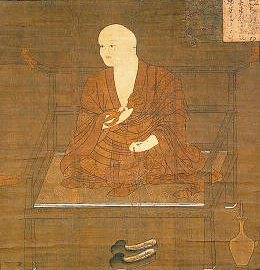
Kukai: Founder of Shingon Buddhism – The Teachings of Esoteric Buddhism and the Legacy of Kobo Daishi
イントロダクション
空海、後の弘法大師は、真言宗の創始者として知られ、真言密教の普及に大きな役割を果たしました。
彼の教えは、密教の神秘的な実践と哲学を内包し、多くの人々に影響を与え続けています。
この記事では、空海の生涯と、彼が残した真言密教の教義、さらにはその遺産について探求します。
読者は、日本仏教史におけるこの偉大なマスターの足跡を辿りながら、真言宗の深遠な教えに触れることになるでしょう。
Introduction
Kukai, later known as Kobo Daishi, is renowned as the founder of Shingon Buddhism and played a pivotal role in spreading Esoteric Buddhism.
His teachings encapsulate the mystical practices and philosophy of Esoteric Buddhism, continuing to influence countless individuals.
This article delves into Kukai’s life, the doctrines of Shingon Esoteric Buddhism he left behind, and explores his enduring legacy.
Readers will trace the footsteps of this great master in Japanese Buddhist history while gaining insights into the profound teachings of Shingon Buddhism.
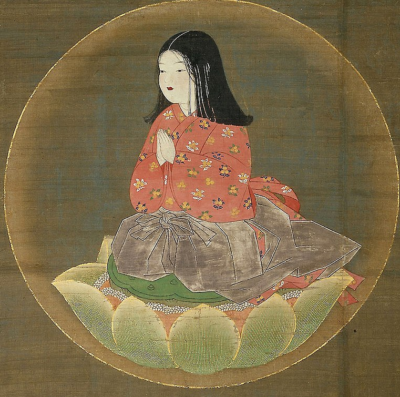
A Childlike Portrait of the Monk Kukai in 14th Century Japanese Painting
空海とは-真言宗の開祖にして、弘法大師の生涯
空海、後の弘法大師は、774年に生まれ、835年に逝去した仏教の高僧です。
彼は真言宗を開くことになる重要な僧であり、日本仏教史においても特筆すべき人物とされています。
空海は、若い頃から学問に秀で、特に漢字の造詣が深かったと伝えられています。
彼は、804年の遣唐使として中国に渡り、そこで密教、特に真言密教の教えを学びました。
帰国後、空海は真言密教の普及に努め、多くの寺院を建立し、修行体系を整えることで、真言宗の基盤を固めたのです。
また、彼は書や彫刻など芸術面においても大きな足跡を残しています。
空海は、その教えを通じて、人々に内面の平安と悟りを求めることを説きました。
真言宗では、仏の真言(マントラ)を唱えることで、心を浄化し、最終的には悟りに至るとされています。
弘法大師として広く知られるようになった空海は、多くの弟子を育成し、彼の教えは今日に至るまで受け継がれています。
さらに、空海は、平安時代の文化にも影響を与え、彼の思想や芸術は、日本の伝統文化の形成に寄与しました。
彼の死後、弘法大師という称号が贈られ、その名は仏教界において尊崇され続けています。
真言宗の開祖として、また弘法大師としての空海の生涯は、単に宗教的な側面だけではなく、日本の歴史や文化にも深く関わっているのです。
彼の教えは、現代においても多くの人々に影響を与え、心の指針とされています。
真言宗の開祖空海(弘法大師)とは
空海は、日本仏教史において非常に重要な位置を占める人物です。
弘法大師としても知られる彼は、真言宗の開祖として広く尊敬されています。
774年に生まれた空海は、若くして仏教に深い関心を持ち、中国へ渡って密教、特に真言密教の教えを学びました。
帰国後の806年、彼は真言宗を日本に確立し、多くの寺院を建立しました。
特に高野山金剛峯寺は、真言宗の総本山として知られ、彼の教えが今日まで受け継がれています。
弘法大師空海は、曼荼羅や梵字などの視覚的な要素を取り入れた独特の修行法を確立しました。
これらの修行法は、内面の悟りを深めるためのものであり、信者たちにも広く受け入れられました。
また、彼は多くの著作を残し、その中には「即身成仏」の概念を説いたものもあります。
これは、全ての生きとし生けるものが仏性を持ち、この世で悟りを開くことができるという教えです。
空海の影響は、宗教的な領域に留まらず、日本の文化や芸術にも及んでいます。
彼は書道においても大きな足跡を残し、その書は今なお多くの人々によって高く評価されています。
弘法大師の死後、彼の遺体は高野山に安置され、彼が入定したとされています。
今日でも、多くの巡礼者が彼の教えを求めて高野山を訪れています。
空海の教えと真言宗の実践は、精神性と日常生活の調和を重んじる日本人の精神性に深く根ざしています。
彼の生涯と功績は、日本の仏教、特に真言密教の理解には欠かせないものであり、今後も彼への関心は続くことでしょう。
Introduction
Kukai, later known as Kobo Daishi, is revered as the founder of Shingon Buddhism, playing a crucial role in the spread of Esoteric Buddhism in Japan.
Born in 774 and passing away in 835, he was a prominent Buddhist monk renowned in Japanese history.
From a young age, Kukai showed exceptional scholarly talent, particularly in Chinese characters.
In 804, he traveled to China as part of an official mission and studied Esoteric Buddhism, focusing on the teachings of Shingon Esoteric Buddhism.
Upon returning to Japan, Kukai dedicated himself to propagating Shingon Esoteric Buddhism, establishing numerous temples and organizing a systematic approach to practice, thereby solidifying the foundation of the Shingon sect.
He also left a profound artistic legacy through his calligraphy and sculptures.
Kukai’s teachings emphasized seeking inner peace and enlightenment through the recitation of Buddhist mantras, believed to purify the mind and ultimately lead to enlightenment.
As Kobo Daishi, widely recognized and respected, Kukai nurtured many disciples, and his teachings have been passed down through generations.
Furthermore, Kukai influenced the culture of the Heian period, contributing to the formation of Japan’s traditional arts and thoughts.
Posthumously honored with the title of Kobo Daishi, his name continues to be revered in the Buddhist community.
The life of Kukai, both as the founder of Shingon Buddhism and as Kobo Daishi, extends beyond religious dimensions, deeply intertwining with Japan’s history and culture.
His teachings remain influential today, serving as a guiding principle for many.
Kukai: Founder of Shingon Buddhism (Kobo Daishi)
Kukai holds a pivotal position in Japanese Buddhist history.
Known also as Kobo Daishi, he is widely respected as the founder of Shingon Buddhism.
Born in 774, Kukai displayed a profound interest in Buddhism from a young age, later traveling to China to study Esoteric Buddhism, particularly Shingon Esoteric Buddhism.
Upon his return in 806, he established Shingon Buddhism in Japan and founded numerous temples.
Of particular note is Mount Koya’s Kongobuji Temple, renowned as the headquarters of Shingon Buddhism, where his teachings continue to thrive.
Kobo Daishi Kukai pioneered unique practices incorporating visual elements like mandalas and Sanskrit characters, widely embraced by followers to deepen their spiritual enlightenment.
He also authored many works, including teachings on the concept of “attaining Buddhahood in this very body,” asserting that all living beings possess Buddha nature and can achieve enlightenment in this lifetime.
Kukai’s influence extended beyond religious realms to encompass Japanese culture and art.
His calligraphy remains highly esteemed, and his presence at Mount Koya, where he is believed to have achieved enlightenment, draws pilgrims seeking his teachings.
Kukai’s teachings and Shingon Buddhism emphasize the harmonization of spirituality with daily life, deeply rooted in the Japanese psyche.
His life and achievements are indispensable to understanding Japanese Buddhism, particularly Shingon Esoteric Buddhism, ensuring continued interest in his legacy.
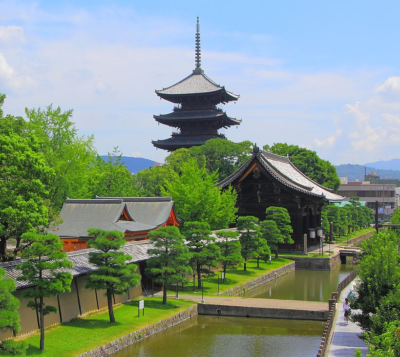
To-ji Temple (Kyoto, Kyoto Prefecture)
空海の生涯と弘法大師としての功績
空海は794年に生まれ、弘法大師として知られるまでになった仏教の高僧です。
真言宗の開祖として、彼の教えは今日に至るまで多くの人々に影響を与えています。
若くして仏教に深い関心を持った空海は、中国へ渡り、そこで真言密教の教えを学びました。
彼は帰国後、この教えを広めることに尽力し、真言宗としての基盤を築き上げました。
空海の功績は、単に宗教的な教義にとどまらず、彼は書道、彫刻、絵画など様々な芸術分野にも影響を及ぼしました。
また、彼が開いた教育機関は、多くの学生に知識を提供し、日本の学問の発展に寄与しました。
空海はその卓越した才能と宗教的な実践を通じて、日本の文化と宗教の両方に深い足跡を残しました。
彼の死後、空海は弘法大師として尊称され、彼の教えは真言密教として日本全国に広まりました。
真言宗は今もなお、多くの信者によって守られ続けており、空海の教えは時を超えて受け継がれています。
空海の生涯は、仏教の歴史だけでなく、日本の文化史においても重要な一章を占めており、彼の功績は今後も語り継がれることでしょう。
The Life and Achievements of Kukai as Kobo Daishi
Kukai was born in 774 and became renowned as Kobo Daishi, a distinguished Buddhist monk.
As the founder of Shingon Buddhism, his teachings have profoundly influenced countless individuals to this day.
With a deep interest in Buddhism from a young age, Kukai traveled to China to study the teachings of Esoteric Buddhism, particularly Shingon.
Upon his return, he dedicated himself to spreading these teachings and establishing the foundation of Shingon Buddhism in Japan.
Kukai’s achievements extended beyond religious doctrine; he also made significant impacts in various art forms such as calligraphy, sculpture, and painting.
Moreover, the educational institutions he founded provided knowledge to many students, contributing to the advancement of Japanese scholarship.
Through his exceptional talents and religious practices, Kukai left profound marks on both Japanese culture and religion.
After his passing, he was revered with the title Kobo Daishi, and his teachings of Shingon Buddhism spread throughout Japan.
Shingon Buddhism continues to be upheld by many believers, preserving Kukai’s teachings across generations.
Kukai’s life constitutes an important chapter not only in the history of Buddhism but also in the cultural history of Japan, ensuring that his achievements will be remembered and celebrated in the years to come.
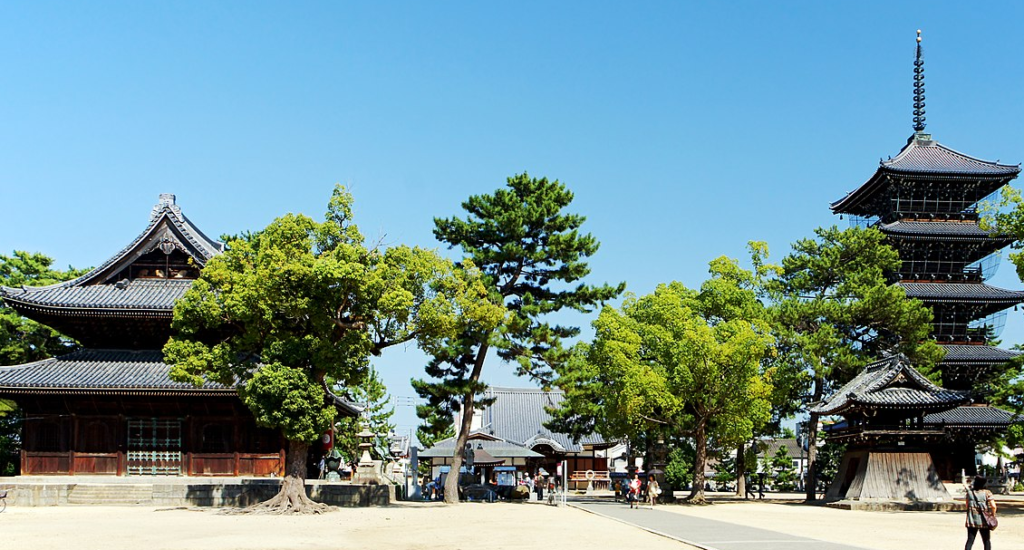
Zentsuji Temple (Zentsuji City, Kagawa Prefecture)
真言密教の基本の教え
真言密教は日本仏教の重要な宗派の一つであり、その教えは空海(弘法大師)によって確立されました。
彼は真言宗の開祖として知られ、8世紀から9世紀にかけて活躍した僧侶であり、学者でもあります。
真言密教は、仏の智慧と慈悲を体現し、修行者自身が仏の境地に至ることを目指す教えです。
真言宗の歴史は、空海が中国で習得した密教を日本に伝えたことに始まります。
その教義は、密教の宇宙観と実践を重視し、独特な修法と儀式を含みます。
真言宗では、仏や菩薩との一体化を目指し、そのための具体的な修行法が提供されています。
真言宗の教えには、様々な特徴がありますが、その中でも重要なのが真言(マントラ)の唱え方です。
これらの真言は、仏の真実の声とされ、唱えることで内なる仏性を呼び覚ますとされています。
例えば、「オン・アボキャ・ベイローシャノウ・マカ・ボダラ・マニ・ハンドマ・ジンバラ・ハラバリタヤ・ウン」は、大日如来を呼び寄せ、その力を借りるための真言です。
真言密教の修行は、心と身体の浄化に重点を置き、瞑想、唱題、身体の動作を組み合わせたものです。
これらの実践を通じて、修行者は自我を超えた境地へと導かれるとされます。
また、真言宗では八大菩薩や五大明王など、多くの護法神を尊崇し、それぞれに関連する真言を唱えることで、様々な利益が得られると教えています。
空海によって開かれ、日本に根付いた真言密教は、今日においても多くの人々にとって精神的な支えとなり、その深遠な教えが受け継がれています。
真言宗の寺院や修行は、日本文化の中で特別な位置を占めており、その教義の理解を深めることは、日本の仏教を理解する上で欠かせない要素となっています。
真言宗の歴史と教義の概要
真言宗は、9世紀に空海、別名弘法大師によって開かれた仏教の宗派であり、真言密教の教えを伝えています。
空海は、唐の時代に中国へ留学し、密教の教義を学んだ後、日本に帰国して真言密教を広めたことで知られています。
真言密教は、密教の中でも特に修行法や儀式が重視される宗派として位置づけられており、様々な真言や法具を用いた密教特有の修法が特徴です。
真言宗の教えは、一切の衆生が仏性を内在しているという信念に基づいており、その仏性を顕現させるための修行を行います。
修行の中心となるのは、真言(マントラ)の唱え方や瞑想、そして仏像や曼荼羅への供養などです。
特に有名な真言は「おん あびらうんけん」という六字の真言で、これを唱えることで心を浄化し、悟りへと近づくとされています。
真言宗で唱えられる真言は、梵語を音訳したものであり、その音の振動が持つ力によって心身を清め、宇宙との調和を図るとされています。
真言宗の修行は、形式にとらわれず、日常生活の中で行えるものも多く、信徒にとって親しみやすい宗派となっています。
このように、真言宗は空海(弘法大師)によって開かれ、真言密教の教えを日本に根付かせた宗派です。
その歴史と教義は、日本の仏教文化に大きな影響を与えてきました。真言宗の開祖である空海の思想や修行方法は、今日においても多くの人々に宗教的な指針を提供し続けています。
The Fundamental Teachings of Shingon Esoteric Buddhism
Shingon Esoteric Buddhism is one of the prominent sects in Japanese Buddhism, established by Kukai (also known as Kobo Daishi).
Kukai, a revered Buddhist monk and scholar, lived and thrived from the 8th to 9th centuries, founding the Shingon sect as its patriarch.
At its core, Shingon aims to embody the wisdom and compassion of Buddhas, guiding practitioners towards realizing the enlightened state themselves.
The history of Shingon Buddhism traces back to Kukai’s study of Esoteric Buddhism in China, which he brought back to Japan, emphasizing its cosmic worldview and practices.
Central to Shingon teachings are unique rituals and practices designed to facilitate the integration of the practitioner with Buddhas and Bodhisattvas.
A significant aspect of Shingon doctrine involves the chanting of mantras (known as “shingon” in Japanese), believed to awaken the innate Buddha nature within oneself through the vibrational power of these sacred sounds.
For instance, the mantra “On Abirauenken” calls upon the Dainichi Nyorai (Mahavairocana) to harness its transformative energy.
Kukai’s introduction of Shingon Buddhism to Japan has provided enduring spiritual support for many, shaping Japanese culture and religion profoundly.
Shingon temples and practices hold a special place in Japanese cultural heritage, offering insights crucial to understanding Japanese Buddhism.

Kongobuji Temple (Koya, Wakayama Prefecture)
真言宗の教えと特徴
真言宗は、空海(弘法大師)によって開かれた日本の仏教宗派です。
彼は真言密教の教義を日本に伝え、多くの人々に影響を与えました。
この宗派の特徴は、密教の修行法としての真言(マントラ)の唱え方にあります。
真言宗では、言葉の力を通じて悟りを開くことを目指しています。
真言宗の歴史は、空海が中国から密教を学び帰国した後の平安時代に始まります。
彼は、その教えを広めるために多くの寺院を建立し、後に弘法大師と呼ばれるようになりました。
真言宗の教義は、仏の智慧と慈悲を自身の内に発見し、日常生活の中で実践することに重点を置いています。
真言宗では、特定の真言を唱えることで心を浄化し、仏の境地に近づくことができるとされています。
例えば、「オン マカ キャロニキャ ソワカ」という真言は、不動明王を呼び寄せるためのものです。
この真言は、障害を取り除き、精神を集中させる効果があるとされています。
このように、真言宗の教えは、日常生活における心の持ち方や行動に深く関わり、その実践を通じて人々が悟りに至る道を示しています。
空海と彼の教えは、今もなお多くの信者によって尊ばれ、実践されています。
真言宗で唱える言葉とその意味
真言宗は、空海によって日本に伝えられた仏教の宗派です。
弘法大師とも称される空海は、真言宗の開祖として知られ、真言密教の教えを広めました。
この宗派の教義には、宇宙と人間の本質的な繋がりを理解し、悟りを開くための修行法が含まれています。
真言宗の歴史は、9世紀に空海が唐から持ち帰った密教の教えに遡ります。
彼は、現在の高野山に金剛峯寺を建立し、真言密教の中心地としました。
真言宗の教えは、声と言葉に重きを置くことが特徴で、真言(マントラ)の唱え方には特別な意味が込められています。
真言宗で唱えられる言葉には、多くの真言がありますが、最も基本的で重要な真言は「おん まか きゃろにきゃ そわか」です。
これは、大日如来への帰依と結びついており、修行者が悟りに近づくために繰り返し唱えるものです。
各真言には、仏の智慧や慈悲を表す特定の力が宿るとされ、それらを唱えることで修行者自身の心身を浄化し、究極的な真理に到達することが目指されます。
真言宗の修行は、様々な儀式や瞑想法を含むが、中心となるのは常に真言の唱える実践です。
この宗派の教えと歴史を深く理解することは、その真言の意味をより深く感じ取り、内面的な変化を体験する上で不可欠です。
空海の教えに従い、真言宗の修行者は日々の生活の中で真言を唱え続け、悟りへの道を歩んでいるのです。
Esoteric Buddhism: Teachings and Characteristics of Shingon Buddhism
Shingon Buddhism is a significant sect of Japanese Buddhism founded by Kobo Daishi, also known as Kukai.
Kukai introduced the teachings of Esoteric Buddhism to Japan, influencing many people thereafter.
Central to this sect is the practice of chanting mantras, known as “shingon,” to attain enlightenment through the power of spoken words.
The history of Shingon Buddhism dates back to the Heian period when Kukai returned from China, where he studied Esoteric Buddhism.
He established numerous temples to spread these teachings and was later revered as Kobo Daishi.
The doctrine of Shingon Buddhism emphasizes discovering the wisdom and compassion of Buddha within oneself and integrating these into daily life practices.
Chanting specific mantras purifies the mind and brings one closer to the enlightened state of Buddha.
For instance, the mantra “On Makakya Rosaka” is used to invoke Fudo Myoo, believed to remove obstacles and enhance concentration.
Thus, the teachings of Shingon Buddhism deeply influence personal attitudes and actions in daily life, guiding practitioners on the path to enlightenment.
Words and Meanings in Shingon Buddhism
Shingon Buddhism, introduced to Japan by Kukai, known as Kobo Daishi, focuses on the teachings of Esoteric Buddhism.
Its doctrine emphasizes understanding the inherent connection between the universe and human nature to attain enlightenment through specific practices.
The history of Shingon Buddhism traces back to the 9th century when Kukai brought teachings of Esoteric Buddhism from Tang China.
He established Kongobuji Temple on Mount Koya as the center of Shingon Esoteric Buddhism.
Central to the teachings of Shingon Buddhism is the significance of voice and language, particularly in the chanting of mantras (“shingon”).
Among the many mantras, the fundamental and essential mantra is “On Makakya Rosaka.”
This mantra is associated with devotion to Dainichi Nyorai and is repeatedly chanted by practitioners to approach enlightenment.
Each mantra embodies specific powers representing Buddha’s wisdom and compassion, aiming to purify the practitioner’s mind and body and ultimately reach the ultimate truth.
Practicing Shingon Buddhism includes various rituals and meditation techniques, with chanting mantras being the core practice.
Understanding deeply the teachings and history of this sect is crucial to grasping the meanings behind these mantras and experiencing internal transformation.
Following Kukai’s teachings, practitioners of Shingon Buddhism chant mantras daily in their lives, walking the path toward enlightenment.
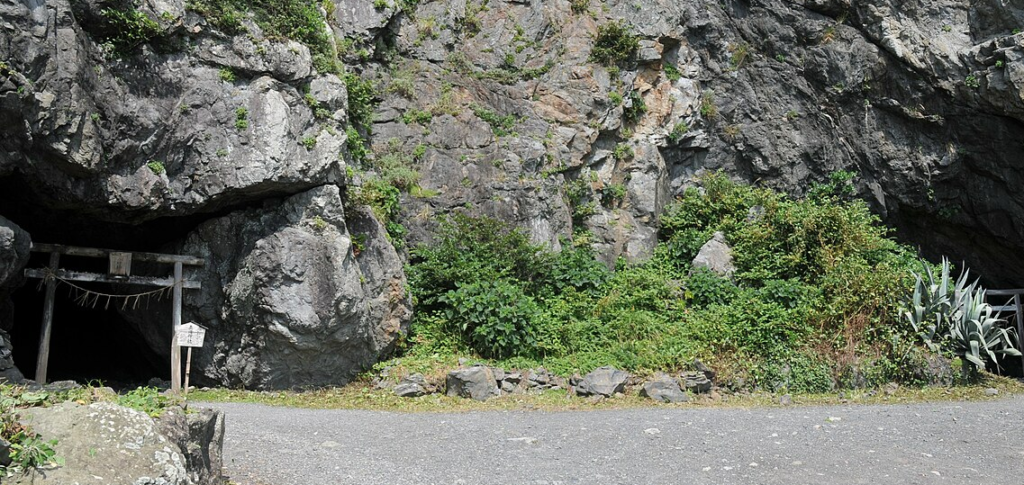
Gokurakuji Cave Dwellings (Muroto City, Kochi Prefecture)
真言宗の実践-信者の生活と修行
真言宗では、信者の日常生活がその実践の核心をなすとされています。
空海、またの名を弘法大師は、この宗派の開祖として知られ、真言密教の教えを日本に広めたことで尊敬を集めています。
信者たちは、檀信徒としてのお勤めに励み、日々の生活の中で作法を重んじます。
朝夕の勤行、真言を唱えることで心を浄化し、日常生活における細かな行動規範を守ることが求められます。
檀信徒のお勤めとは、自宅の仏壇に向かって読経や真言の唱えることを指し、これを通じて仏とのつながりを深めていくことが大切です。
また、日々のお勤めには、定められた時間に合わせて行うものや、個人の心がけとして行うものがあります。
それぞれの行いには、心を清めるという共通の目的が存在します。
生活規範としては、五戒や八正道をはじめとする仏教の基本教義を守ることが基本です。
これらの教えに従いながら、日々を過ごすことで、信者は修行を積み重ね、心身ともに高い境地を目指していきます。
真言宗の実践は、厳しい修行だけではなく、日常の中での心の持ちようや行動が、その教えを体現することに他なりません。
Practices of Shingon Buddhism – Followers’ Daily Life and Spiritual Discipline
In Shingon Buddhism, the core of practice lies in the daily lives of its followers.
Known as Kobo Daishi, Kukai founded this sect and earned respect for spreading the teachings of Esoteric Buddhism in Japan.
Followers dedicate themselves to their roles as temple parishioners, placing importance on rituals in their daily routines.
They purify their minds through morning and evening prayers, chanting mantras, and adhering to detailed behavioral norms in their daily lives.
The duties of temple parishioners involve reciting sutras and chanting mantras before their home altars, fostering a deep connection with the Buddha.
These daily practices include scheduled rituals and personal commitments, each aimed at purifying the mind.
Common to all these practices is the goal of spiritual purification.
Living by guidelines such as the Five Precepts and the Noble Eightfold Path forms the basis of their ethical standards.
By adhering to these teachings, followers accumulate spiritual practice and strive for higher spiritual states in both mind and body.
The practice of Shingon Buddhism extends beyond rigorous discipline to embodying its teachings in everyday attitudes and actions.

Statue of Kobo Daishi Standing on the Site of His Former Residence (Saiin, Zentsuji)
檀信徒のお勤めと作法
檀信徒が日々守るべきお勤めと作法は、真言宗の教えに深く根ざしています。
空海、すなわち弘法大師は真言宗の開祖として、真言密教の普及に尽力されました。
その教えは、現代においても信者の生活と修行の中心にあります。
お勤めとは、毎日決められた時間に読経や祈りを捧げる宗教的な行為です。
これにより、檀信徒は日々の生活の中で仏教の教えを実践し、心を浄化することを目指します。
特に、朝と夕のお勤めは檀信徒にとって欠かせない日課となっています。
作法においては、礼儀や振る舞いが重要視されます。
真言宗における礼拝の際は、正しい姿勢と心構えで仏前に臨むことが求められます。
また、仏教の教えに則った生活規範を守ることも、檀信徒としての心得です。
日々のお勤めには、真言宗特有の真言やマントラの唱え方も含まれます。
これらの真言は、弘法大師空海によって伝えられたものであり、心を統一し内面を磨くために重要な役割を果たします。
生活規範としては、非暴力や誠実さ、慈悲の心を持つことが基本とされています。
これらの規範は、日常生活の中での人との関わりや社会生活においても実践されるべきものです。
真言宗の実践は、形式だけでなく、心の持ち方においても重要です。
そのため、檀信徒は外面的な作法だけでなく、内面的な修養にも励むことが求められます。
弘法大師空海の教えは、現代の檀信徒にとっても生きた智慧となっており、日々のお勤めと作法を通じて、その教えを体現しているのです。
日々のお勤めについて
日々のお勤めは、真言宗の信者にとって心身を清め、仏道修行を積む重要な実践です。
空海、弘法大師として知られる真言宗の開祖は、真言密教の教えを広め、日本の仏教文化に大きな影響を与えました。
檀信徒は、毎朝夜の勤行を欠かさず行い、その中で唱える真言は、心を統一し、日常生活における悩みや障害を乗り越える力となります。
信者のお勤めには、礼拝や読経、写経などが含まれ、それぞれに定められた作法が存在します。
これらの行いは、ただの儀式ではなく、自己を見つめ直し、内なる仏性に目覚めるための手段とされています。
真言宗では、日々の行動が修行であると捉え、仏教の教えを生活の中に取り入れることが奨励されています。
信者が守るべき生活規範は、心得として、日常生活における指針を提供します。
仏教の五戒や八正道は、倫理的な行動を促し、他者との調和を尊重する生き方を示しています。
真言宗の信者としてのお勤めは、外形的な行為だけでなく、内面的な精神性の向上を目指すものです。
このように、日々のお勤めは、真言宗信者の精神的成長に不可欠な要素であり、弘法大師空海の教えに基づいた生活の実践と言えるでしょう。
Daily Devotions and Etiquette for Parishioners
In Shingon Buddhism, the daily devotions and etiquette observed by parishioners are deeply rooted in its teachings.
Known as Kobo Daishi, Kukai is revered as the founder of Shingon Buddhism, having spread the teachings of Esoteric Buddhism in Japan.
Devotions entail religious acts of recitation and prayer performed at designated times each day, aiming to practice Buddhist teachings and purify the mind in daily life.
Especially crucial are morning and evening devotions, which form indispensable routines for parishioners.
Etiquette emphasizes proper conduct and respect during worship in front of the Buddha.
Adherence to Buddhist ethical principles such as non-violence, sincerity, and compassion forms the core of these norms.
Daily devotions also include the recitation of specific mantras unique to Shingon Buddhism, transmitted by Kobo Daishi Kukai to unify the mind and refine one’s inner self.
These teachings guide parishioners not only in ritualistic practices but also in their approach to daily interactions and social life, embodying Buddhist wisdom in both form and spirit.
Devotional Practices in Daily Life
Daily devotions are pivotal practices for followers of Shingon Buddhism to purify the mind and engage in the path of Buddhist practice.
Kobo Daishi, renowned as the founder of Shingon Buddhism, propagated the teachings of Esoteric Buddhism, profoundly influencing Japanese Buddhist culture.
Followers diligently perform morning and evening devotions, chanting mantras that unify the mind and empower them to overcome daily challenges and obstacles.
Devotional practices include rituals such as worship, recitation, and transcription, each with prescribed etiquettes that are more than mere rituals—they serve as means to introspect and awaken one’s inner Buddha-nature.
Shingon Buddhism emphasizes that daily actions constitute practice, encouraging followers to integrate Buddhist teachings into their everyday lives.
Guidelines for ethical living, such as the Buddhist Five Precepts and Eightfold Path, promote ethical behavior and respect for harmonious living with others.
For followers of Shingon Buddhism, devotional practices not only entail external acts but also aim for spiritual elevation and inner refinement.
Thus, daily devotions are integral to the spiritual growth of Shingon Buddhism practitioners, embodying the practical application of Kobo Daishi Kukai’s teachings in daily life.
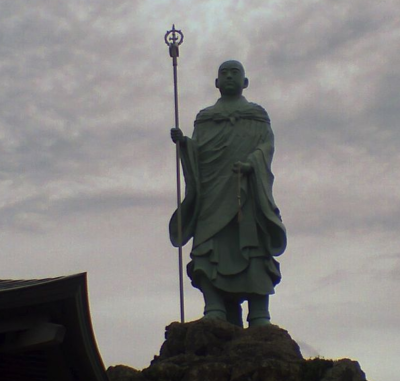
Statue of Kobo Daishi at Henjo-in Temple, part of the Shikoku Pilgrimage in Sasaguri
心得としての生活規範
真言宗における信者の生活は、空海(弘法大師)が伝えた真言密教の教えに根ざしています。
その生活規範は日々の行動や心がけに反映され、檀信徒のお勤めと作法を通じて実践されているのです。
日々のお勤めには、朝夕の勤行や読誦、そして仏前での瞑想が含まれます。
これらは心身を清め、日常生活における道徳的な指針を提供するものです。
真言宗の開祖である空海は、心得としての生活規範を重要視しました。
彼は信者たちに対し、慈悲と智慧をもって行動すること、そして常に自己の心を研鑽することを説いたのです。
この規範は、現代社会においても人々が内面的な平和を見出し、他者との調和を図る上で有効な指針となり得ます。
実践の中心となるのは、真言宗におけるマントラである真言の唱え方や、その意義を深く理解することです。
真言密教では、これらの真言を通じて仏の智慧と力を身につけ、日常生活においてもその恩恵を享受することができるとされています。
信者はこれらの教えを生活の中で体現し、心の平穏を保ちながら社会に貢献することが求められているのです。
Principles of Conduct as Guidelines for Life
The daily life of believers in Shingon Buddhism is rooted in the teachings of Kobo Daishi, also known as Kukai, who propagated the esoteric Shingon doctrine.
These guidelines manifest through daily actions and mindfulness, practiced by adherents through their religious duties and etiquette.
Daily duties include morning and evening prayers, recitations, and meditation before the Buddha. These practices purify the mind and body while providing moral guidance for everyday life.
Kobo Daishi, the founder of Shingon Buddhism, emphasized principles of conduct as essential guidelines.
He urged followers to act with compassion and wisdom, continually refining their own minds.
These principles remain relevant in modern society, helping individuals find inner peace and foster harmony with others.
Central to these practices is the chanting of mantras, known as “shingon,” and understanding their profound meanings within Shingon Buddhism.
Through these mantras, practitioners aim to embody the wisdom and power of the Buddha, benefiting from these teachings in their daily lives.
Believers are encouraged to embody these teachings, maintaining inner tranquility while contributing positively to society.

(日本さいはての地を去るの意)の碑』
Saihate no Chi: Kukai’s Monument “Jihongai” in Mitsuraku, Goto City
真言宗の経典とその役割
真言宗は、空海、別名弘法大師によって開かれた宗派であり、真言密教の教えを伝えています。
この宗派の核となる経典は「理趣経」であり、その内容と役割は仏教の世界において特別な位置を占めています。
理趣経は真言宗で特に重視される経典であり、修行や儀式において絶えず唱えられています。
この経典は、密教の根本的な思想を説くものであり、空海自身が中国から持ち帰り、日本における真言密教の基盤を築くのに不可欠でした。
仏教の中でも理趣経には珍しい記述が存在し、それは密教特有の真言(マントラ)や瞑想法、仏像の作法などを含んでいます。
これらの教えは、弘法大師が理趣経をもとに展開した真言宗の教義と密接に関連しており、信者たちにとっては修行を深めるための重要な指針となっています。
理趣経がもたらした影響は計り知れず、真言宗の開祖である空海の思想や実践に強く反映されています。
この経典を通じて、弘法大師は密教の秘密を明かし、多くの人々に精神性の高い宗教体験を提供しました。
また、理趣経の教えは芸術や文化にも影響を与え、日本の仏教美術における真言密教の要素は今日でも見受けられます。
真言宗の経典である理趣経は、空海によって日本に伝えられた後、長い歳月を経てもその教えが色褪せることなく、真言宗信者だけでなく、多くの仏教徒にとって大切な役割を果たし続けています。
The Scriptures of Shingon Buddhism and Their Role
Shingon Buddhism, founded by Kukai, also known as Kobo Daishi, transmits the teachings of Esoteric Buddhism in Japan.
Central to this sect is the “Rishu Kyo” scripture, which holds a unique position in the Buddhist world for its content and significance.
The “Rishu Kyo” is highly revered within Shingon Buddhism and is continuously recited during practices and rituals.
This scripture expounds the fundamental ideas of Esoteric Buddhism and was indispensable for Kukai in establishing the foundation of Shingon Esoteric Buddhism upon his return from China.
It contains rare descriptions within Buddhist literature, including specific mantras, meditation techniques, and guidelines for creating Buddhist statues, unique to Esoteric Buddhism.
These teachings are closely tied to the doctrines of Shingon Buddhism that Kobo Daishi developed based on the “Rishu Kyo,” serving as crucial guidelines for practitioners to deepen their spiritual practice.
The profound influence of the “Rishu Kyo” cannot be overstated, profoundly shaping Kukai’s philosophy and practices within Shingon Buddhism.
Through this scripture, Kobo Daishi unveiled the secrets of Esoteric Buddhism, offering spiritually enriching religious experiences to many.
Moreover, the teachings of the “Rishu Kyo” have permeated into arts and culture, evident in Japan’s Buddhist art, particularly in elements of Shingon Esoteric Buddhism that endure to this day.
Since its introduction to Japan by Kukai, the “Rishu Kyo” continues to play a vital role, maintaining its significance not only among Shingon Buddhist practitioners but also among many Buddhists, illustrating its enduring importance in Japanese religious heritage.

The Okakeido Hall of Chigo Daishi in Todoroki Valley
真言宗でよく使われる経典「理趣経」とは
真言宗で頻繁に用いられる「理趣経」は、空海、すなわち弘法大師がもたらした真言密教の教義を深く理解する上で欠かせない経典です。
この経典は真言宗の開祖である空海が中国から持ち帰り、日本における真言密教の基盤となりました。
理趣経には、仏教の普遍的な教えに加え、真言宗特有の秘密の修法や儀式が記されており、その内容は他宗派の経典には見られない特異なものです。
理趣経は、内包する教義が直接的に修行方法や悟りへの道筋を示しているため、実践的な経典として信者や僧侶たちから重視されています。
また、この経典は空海自身が説いた真言宗の教えを体系的に伝える役割を担っており、真言宗における修行の核心をなしていると言えるでしょう。
理趣経が日本の仏教界にもたらした影響は計り知れず、空海によって確立された真言密教の教義が、今日に至るまで多くの信者に受け継がれていることがその証左です。
この経典を通じて、修行者は真言宗独自の真言(マントラ)、印相(ムドラ)、灌頂(カンジョウ)などの密教特有の実践を学び、心身を浄化し、究極的な真理に到達するための道を歩んでいます。
仏教の中でも珍しい記述がある経典
真言宗でよく使われる経典「理趣経」は、空海が中国から持ち帰り日本に広めたものです。
空海は弘法大師とも称され、真言宗の開祖として知られています。
この経典は、真言密教の教義を体系的に説明しており、仏教の中でも特に深遠な教えを含むとされています。
理趣経には、宇宙や人間の本質に関する独特の記述があり、その内容は他の仏教経典には見られないものです。
この経典は、実践的な修行法としての真言密教の要点を押さえつつ、宇宙と生命の真理についての洞察を提供しています。
理趣経がもたらした影響は計り知れません。
この経典は、日本の仏教文化において、瞑想や真言の唱え方などの修行方法を整える基盤となりました。
また、理趣経の教えは、多くの人々に精神的な平和と内観の重要性を教えています。
空海によって伝えられたこの経典は、真言宗における信仰生活の核となっており、今日でも多くの信者によって読誓されています。
理趣経がもたらした影響
理趣経は真言宗において中心的な役割を果たす経典であり、空海、すなわち弘法大師によって日本にもたらされた真言密教の教義を体現しています。
真言宗の開祖である空海は、この経典を基に多数の論文や注釈を残し、その教えが今日に至るまで継承されています。
理趣経には、仏教の中でも珍しい記述が含まれており、それは密教特有の真言(マントラ)や瞑想法、そして宇宙と人間の関係性に関する深い洞察を提供しています。
この経典は、修行者が悟りを開くための実践的な方法を示し、精神性の向上を促すための重要なテキストとされています。
理趣経がもたらした影響は、単に宗教的な枠組みに留まらず、日本の文化や芸術にも深く根ざしています。
空海の教えは、書道、彫刻、建築など、様々な分野で彼の影響を見ることができます。
また、真言宗の寺院や修行方法においても、理趣経の教えが色濃く反映されており、弘法大師の精神的遺産として今なお多くの人々に受け継がれています。
このように、理趣経は空海を通じて日本に伝わり、真言宗だけでなく、日本文化においても大きな足跡を残しています。
その教えは、時間を超えて現代人の心にも響き、精神的な豊かさを求める人々にとって貴重な指針となっているのです。
The Lotus Sutra in Shingon Buddhism
The Lotus Sutra, frequently utilized in Shingon Buddhism, is an essential scripture brought to Japan by Kukai, also known as Kobo Daishi, who founded the Shingon sect and propagated esoteric teachings.
This scripture holds a unique position within Buddhist literature for its comprehensive philosophical teachings and specific rituals intrinsic to Shingon practices.
Kukai introduced the Lotus Sutra to Japan from China, laying the foundation for Shingon Esoteric Buddhism. It encompasses profound insights into universal Buddhist principles alongside esoteric practices such as mantras and meditation techniques.
The influence of the Lotus Sutra within Japanese Buddhism is immeasurable, exemplifying Kukai’s enduring impact on spiritual practices and cultural expressions, including art and meditation.
Through this scripture, practitioners learn the distinctive mantras and rituals that cleanse the mind and body, guiding them toward ultimate spiritual realization.
The Lotus Sutra’s profound teachings continue to resonate in contemporary Japanese culture, offering invaluable spiritual guidance for those seeking inner peace and enlightenment.

Portrait of Egō (Eighth Patriarch of Shingon Buddhism)
真言宗の寺院と聖地
真言宗は日本の仏教宗派の一つで、空海(弘法大師)によって開かれました。
その教えは真言密教として知られ、多くの寺院がこの伝統を受け継いでいます。
代表的な寺院には高野山金剛峯寺があり、ここは空海が遷化した場所としても知られており、真言宗の信者にとって最も重要な霊場です。
また、東寺(教王護国寺)は京都にある真言宗の総本山であり、空海が真言密教を広めた地としても名高いです。
空海は弘法大師とも称され、彼の足跡を辿る巡礼は多くの人々にとって特別な意味を持っています。
彼が修行した四国の霊場、四国八十八ヵ所霊場は、信者はもちろん、多くの観光客にも人気の巡礼路です。
この霊場巡りは、自己の内面を見つめ、精神的な成長を目指す旅とされています。
真言宗の寺院と聖地は、単なる観光地ではなく、信仰心を深め、心の平穏を得るための場所として、今もなお多くの人々に尊ばれています。
それぞれの寺院は、空海の教えと密教の神秘を今日に伝えるための活動を続けており、その一環として様々な法要や修行が行われています。
Temples and Sacred Sites of Shingon Buddhism
Shingon Buddhism is one of Japan’s Buddhist sects founded by Kukai (Kobo Daishi). Known for its teachings of esoteric Buddhism, many temples uphold this tradition.
One of the most renowned temples is Mount Koya’s Kongobuji, known as the place where Kukai passed away, making it the most significant spiritual site for Shingon Buddhists.
In Kyoto, Toji Temple (Kyoogokokuji) serves as the sect’s head temple, renowned as the place where Kukai spread esoteric Buddhism.
Kukai, also known as Kobo Daishi, left a profound spiritual legacy, and pilgrimages tracing his footsteps, such as the Shikoku Pilgrimage of the 88 Temples he trained at in Shikoku, hold special significance for many.
These pilgrimages are considered journeys of introspection and spiritual growth, attracting not only believers but also tourists seeking cultural and spiritual enrichment.
Shingon Buddhist temples and sacred sites are revered not just as tourist destinations but as places where people deepen their faith and find inner peace.
Each temple continues to propagate Kukai’s teachings and the mysteries of esoteric Buddhism, hosting various rituals and practices aimed at transmitting these traditions to future generations.
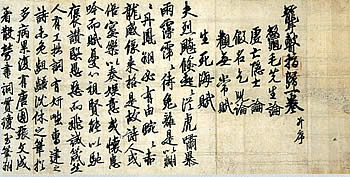
“Deaf and Blind Return to the Right Path” by Kukai
真言宗の主な寺院と現在の活動
真言宗は、空海(弘法大師)によって開かれた仏教の宗派であり、真言密教の教えを基としています。
この宗派には、日本全国に多くの寺院が存在し、それぞれが独自の活動を行っています。
特に知られているのは、四国八十八ヵ所霊場の巡礼路です。これは、空海が修行したとされる地を巡るもので、多くの信者や観光客が訪れます。
京都にある高野山金剛峯寺は、真言宗の総本山として知られ、空海が最後の修行地とした場所です。
現在も多くの僧侶が修行を積み、多種多様な宗教行事が行われており、信者だけでなく一般の人々にも開かれた空間となっています。
また、同寺院では、密教の教義を学ぶための講座も開かれており、真言宗の教えを広める活動を積極的に行っています。
四国八十八ヵ所霊場は、弘法大師が遺した霊場として、歩いて巡ることで心身の浄化を目指す巡礼路です。
この霊場巡りは、修行の場としてだけでなく、地域の文化や経済にも大きく貢献しており、地域住民と巡礼者との交流も深まっています。
真言宗の寺院では、定期的に法要や読経が行われ、信者の精神的な支えとなっています。
また、現代社会におけるストレスや心の問題に対する相談活動も行い、現代人の心のケアにも貢献しています。
これらの活動を通じて、真言宗の寺院は、過去から現在に至るまで、人々の心の拠り所としての役割を果たしてきました。
真言宗の寺院とその活動は、弘法大師空海の教えを今に伝え、多くの人々に影響を与え続けています。
これらの寺院は、密教の智慧を現代に生かす場として、また、日本の文化遺産として、重要な役割を担っているのです。
空海(弘法大師)ゆかりの地と巡礼
空海、またの名を弘法大師は、真言宗の開祖であり、真言密教の教えを日本に広めた高僧です。
彼の足跡を追う巡礼は、多くの信者や歴史愛好家にとって重要な精神的旅となっています。
特に、四国地方には空海ゆかりの地が数多く点在し、四国八十八ヵ所霊場として知られる巡礼路があります。
この霊場は、修行と悟りを目指す者たちが訪れる聖地で、各寺院には空海の教えや真言密教の影響が色濃く残されています。
真言宗の主な寺院には、京都の東寺や高野山の金剛峯寺などがあり、これらは空海が直接関わった場所としても知られています。
東寺は真言宗の総本山として、真言密教の教えを今に伝える重要な役割を担っており、高野山は修験道の聖地としても名高いです。
これらの寺院では、現在も多くの僧侶が修行を積み、真言密教の智慧を学び、広める活動を行っています。
巡礼は単なる旅行ではなく、自己を見つめ直し、精神的な成長を目指す行為とされています。
四国八十八ヵ所霊場を巡ることは、空海の教えに触れ、彼の精神性を体感する機会を提供します。
この霊場巡りは、参拝者にとっては厳しい修行の道のりでもありますが、それを完遂した際の達成感は計り知れないものがあります。
空海と弘法大師の名を冠するこれらの聖地や寺院を訪れることは、真言宗の開祖の偉業を称え、真言密教の深い教えに触れる貴重な機会となります。
巡礼は心を清め、新たなる知見を開く旅として、今もなお多くの人々を魅了し続けています。
四国八十八ヵ所霊場とその意義
四国八十八ヵ所霊場は、日本の四国地方に点在する八十八の寺院を巡る仏教の聖地巡礼路です。
この霊場は空海(弘法大師)によって開かれたと伝えられ、彼は真言宗の開祖であり、真言密教の教えを広めたことで知られています。
巡礼者は修行の一環として、これらの寺院を訪れ、自己の精神を研ぎ澄まし、悟りを目指す旅をします。
真言宗の寺院は、それぞれが独自の歴史と文化を有し、現在も多くの信者や観光客に訪れられています。
これらの寺院は、日々の宗教行事や法要を行い、地域社会における精神的な拠り所となっているのです。
また、空海が遺した真言密教の教えは、これらの寺院において今もなお受け継がれ、実践されています。
空海は、弘法大師としても尊敬され、彼の足跡を辿る巡礼は、彼の教えと精神を体験する重要な方法とされています。
四国八十八ヵ所霊場の巡礼は、心身を清め、真言宗の教義に深く触れる機会を提供し、多くの人々にとって人生における重要な節目となっています。
この霊場巡りの意義は、単なる観光以上のものです。
それは内省と自己変革の旅であり、真言密教の教えに基づいた精神的な成長を促します。
四国八十八ヵ所霊場を巡ることは、多くの人々にとって、心の平穏を得るための道となっており、その歴史と文化的な価値は計り知れないものがあります。
Main Temples of Shingon Buddhism and Their Current Activities
Shingon Buddhism is one of Japan’s Buddhist sects founded by Kukai (Kobo Daishi), emphasizing the teachings of Esoteric Buddhism.
Across Japan, numerous temples uphold this tradition, each engaging in unique activities.
Foremost is the pilgrimage route of the Shikoku Pilgrimage, encompassing places where Kukai is believed to have practiced, attracting both believers and tourists.
Located in Kyoto, Mount Koya’s Kongochoji Temple serves as the sect’s headquarters, renowned as Kukai’s final place of training.
Presently, many monks undergo spiritual training here, with various religious ceremonies held regularly, open not only to believers but also to the general public.
Moreover, the temple offers courses to study Esoteric teachings, actively spreading the doctrines of Shingon Buddhism.
The Shikoku Pilgrimage, a route dotted with places associated with Kukai, offers pilgrims an opportunity for spiritual purification and insight into the teachings of Shingon Esoteric Buddhism.
This pilgrimage not only serves as a path for personal spiritual growth but also contributes significantly to local culture and economy, fostering deeper connections between residents and pilgrims.
Temples of Shingon Buddhism conduct regular rituals and chanting sessions, providing spiritual support to believers.
They also offer counseling services to address modern societal stresses and mental health issues, contributing to the well-being of contemporary individuals.
Through these activities, Shingon temples have played a pivotal role as spiritual anchors for people throughout history to the present day.
The activities of Shingon temples, rooted in Kobo Daishi Kukai’s teachings, continue to influence many people.
These temples serve as living repositories of Esoteric wisdom, maintaining their relevance as vital centers of Japanese cultural heritage.
Pilgrimages to sites associated with Kukai offer a profound spiritual journey, revered by believers and history enthusiasts alike.
Especially in the Shikoku region, numerous locations linked to Kukai are revered, with the Shikoku Pilgrimage renowned as a path for spiritual awakening and personal introspection.
Temples such as Toji in Kyoto and Koyasan’s Kongobuji Temple hold special significance as places directly connected to Kukai.
Toji serves as the head temple of Shingon Buddhism, preserving and propagating the teachings of Esoteric Buddhism.
Koyasan, revered as a sacred site for Shugendo practices, also upholds the teachings of Shingon Esoteric Buddhism.
These temples serve as centers where monks practice ascetic disciplines and disseminate the wisdom of Esoteric Buddhism.
Pilgrimages are not mere journeys but transformative quests for self-discovery and spiritual enlightenment.
The Shikoku Pilgrimage offers pilgrims an opportunity to cleanse their spirits and deepen their understanding of the profound teachings of Shingon Buddhism.
These journeys hold great significance, not only as cultural heritage sites but also as paths to inner peace and spiritual growth for many individuals.

Site of Dazaifu Government Office Main Hall Ruins (Dazaifu City, Fukuoka Prefecture)
弘法大師御廟とその他の聖地
弘法大師御廟は、日本の仏教界において非常に重要な地位を占める聖地です。
ここは、真言宗の開祖である空海が最後に遺した場所として知られており、多くの信者や観光客が訪れる霊場となっています。
この御廟は、空海自らが設計し、修行の場として使用されたことで有名です。
また、空海は弘法大師としても広く尊敬されており、その教えは真言密教の核心をなすものです。
御厨人窟は、空海が修行を行なったとされる洞窟であり、真言宗の信者にとっては特別な意味を持つ場所です。
神明窟も同様に、空海が修行に励んだ聖地として知られています。これらの場所は、弘法大師の精神性と歴史的背景を理解する上で欠かせない要素となっています。
東寺は、空海の遺志を継ぎ、真言密教の教えを広めるために建立されました。
この寺院は、弘法大師によって創設された真言宗の総本山として、多くの僧侶や信者が集まる場所です。
東寺には、空海が残した多くの文化財や仏像が保存されており、真言宗の教義を今に伝える重要な役割を果たしています。
弘法大師御廟や御厨人窟、神明窟、東寺を訪れることで、空海の教えや真言密教の深い理解に触れることができます。
これらの聖地は、空海の精神的遺産を今に伝え、真言宗の信仰の中心として尊ばれています。
The Mausoleum of Kobo Daishi and Other Sacred Sites
The Mausoleum of Kobo Daishi holds a significant position in Japan’s Buddhist community. It is renowned as the final resting place of Kobo Daishi, the founder of Shingon Buddhism, and has become a pilgrimage site visited by many believers and tourists alike.
This mausoleum, designed by Kobo Daishi himself and used as a place of spiritual practice, is famous for its historical and religious importance.
The Gokuraku-jodo Cave, where Kobo Daishi is said to have practiced, holds special significance for followers of Shingon Buddhism.
Similarly, the Shinmei-grotto is recognized as another sacred site where Kobo Daishi dedicated himself to spiritual training. These locations are essential for understanding the spiritual legacy and historical background of Kobo Daishi.
To continue Kobo Daishi’s legacy and spread the teachings of Shingon Buddhism, Toji Temple was established.
As the head temple of Shingon Buddhism founded by Kobo Daishi, Toji Temple attracts numerous monks and believers.
Toji Temple houses many cultural artifacts and statues left by Kobo Daishi, playing a crucial role in preserving and transmitting the teachings of Shingon Buddhism to this day.
Visiting the Mausoleum of Kobo Daishi, Gokuraku-jodo Cave, Shinmei-grotto, and Toji Temple allows one to deepen their understanding of Kobo Daishi’s teachings and the profound principles of Shingon Buddhism.
These sacred sites continue to be revered as centers of faith in Shingon Buddhism, preserving Kobo Daishi’s spiritual legacy for future generations.
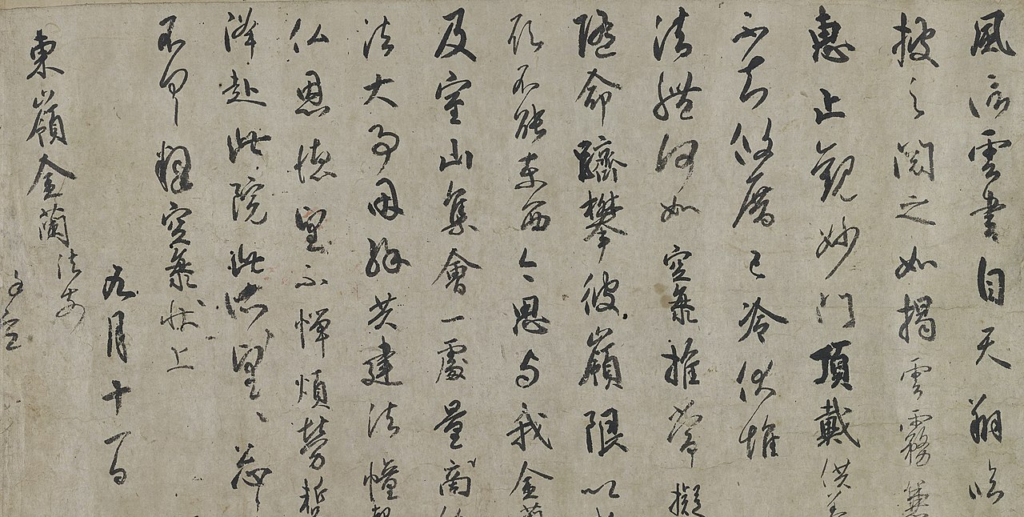
“Fusenjo: First Letter” by Kukai
弘法大師御廟(こうぼうだいしごびょう)の紹介
弘法大師御廟は、空海が最後に過ごした場所として知られ、真言宗の信仰の中心地の一つです。
ここは、四国八十八箇所巡りの終着点にも位置し、多くの巡礼者で賑わいます。
空海は真言密教の教えを広め、真言宗の開祖として尊崇されており、彼の遺徳を偲ぶために多くの人々が訪れます。
御厨人窟は、空海が修行を行ったとされる洞窟であり、彼の霊力が宿る場所として崇められています。
神明窟もまた、空海が修行に励んだ聖地の一つであり、弘法大師の足跡を辿ることができる重要なスポットです。
東寺は、空海が真言密教を広めた拠点として、また真言宗の大本山としての役割を担っています。
この寺院は、平安時代の建築様式を今に伝える貴重な文化財でもあり、世界遺産にも登録されています。
東寺には、空海が作ったとされる仏像や彼に関連する多くの文化財が保存されており、真言宗の歴史を深く理解するための重要な場所となっています。
これらの聖地を訪れることで、空海の教えや真言宗の精神性に触れ、精神的な充足を得ることができるでしょう。
弘法大師御廟をはじめとするこれらの場所は、日本の仏教文化や歴史に興味を持つ人々にとって、訪れる価値のある聖地です。
御厨人窟(みくろど)・神明窟と東寺の重要性
御厨人窟(みくろど)と神明窟は、空海が修行を行った場所として知られ、弘法大師としての彼の生涯において重要な役割を果たしました。
これらの窟は、真言宗の開祖である空海が真言密教の教義を深めた聖地として、多くの信者や学僧に尊崇されています。
東寺は空海が真言宗を広めるために建立した寺院であり、彼の教えが集約された場所として、今日までその重要性を保っています。
空海は、日本仏教史上、最も影響力のある人物の一人であり、彼の教えは日本の宗教的、文化的な風景に深く根付いています。
御厨人窟と神明窟は、彼が得た啓示と修行の成果を今に伝える貴重な遺跡であり、弘法大師の精神性を今に伝える重要な場所です。
東寺には、空海の遺した多数の文化財が収められており、彼の思想や真言密教の教えを学びたい人々にとって、欠かせない学びの場となっています。
これらの聖地を訪れることで、空海の人となりや真言宗の教えに触れることができ、真言密教の理解を深めることが可能です。
御厨人窟や神明窟、東寺は、空海が残した遺産としての価値を今に伝え、彼の教えが未来に向けて継承されるための重要な拠点となっています。
Introduction to the Mausoleum of Kobo Daishi
The Mausoleum of Kobo Daishi is a revered site in the realm of Japanese Buddhism, known as the final resting place of Kobo Daishi and a focal point of Shingon Buddhism’s devotion.
Located at the endpoint of the Shikoku Pilgrimage, it attracts numerous pilgrims seeking to honor Kobo Daishi’s legacy, who propagated the teachings of Shingon Esoteric Buddhism.
The Miroku-do Cave is revered as a place where Kobo Daishi engaged in ascetic practices, believed to be imbued with his spiritual power.
Similarly, the Shinmei-do Cave is another important site where Kobo Daishi dedicated himself to rigorous training, offering a glimpse into the footsteps of this revered figure.
To further spread the teachings of Shingon Esoteric Buddhism, Kobo Daishi established Toji Temple, serving as both a base for propagating Shingon teachings and a central monastery of the Shingon sect.
Toji Temple houses invaluable cultural assets preserving the architectural styles of the Heian period and is registered as a UNESCO World Heritage Site.
Preserving numerous artifacts attributed to Kobo Daishi, Toji Temple stands as a pivotal place for understanding the history and spiritual teachings of Shingon Buddhism.
Visiting these sacred sites allows one to delve into the teachings of Kobo Daishi and experience spiritual fulfillment, making them essential destinations for those interested in Japan’s Buddhist culture and history.
The Significance of Miroku-do and Shinmei-do Caves, and Toji Temple
Miroku-do and Shinmei-do caves are renowned as places where Kobo Daishi dedicated himself to ascetic practices, playing significant roles in his life as Kobo Daishi.
These caves are revered by many followers and scholars of Shingon Buddhism as sacred sites where Kobo Daishi deepened his understanding of Shingon Esoteric Buddhist teachings.
Toji Temple was established by Kobo Daishi to propagate Shingon Buddhism, serving as a center where his teachings were consolidated and disseminated, preserving its importance to this day.
Kobo Daishi remains one of the most influential figures in Japanese Buddhist history, with his teachings deeply ingrained in Japan’s religious and cultural landscapes.
Miroku-do and Shinmei-do caves are invaluable relics that convey the revelations and spiritual achievements of Kobo Daishi, serving as crucial sites for transmitting his spiritual essence to the present.
Toji Temple houses numerous cultural artifacts left by Kobo Daishi, providing an indispensable learning environment for those interested in his philosophy and the teachings of Shingon Esoteric Buddhism.
Visiting these sacred sites offers an opportunity to understand Kobo Daishi’s character and delve into the teachings of Shingon Buddhism, deepening one’s grasp of Shingon Esoteric Buddhism.
Miroku-do, Shinmei-do caves, and Toji Temple continue to uphold the legacy of Kobo Daishi, ensuring his teachings are passed down to future generations, embodying their significance as essential bastions for the preservation of his heritage.
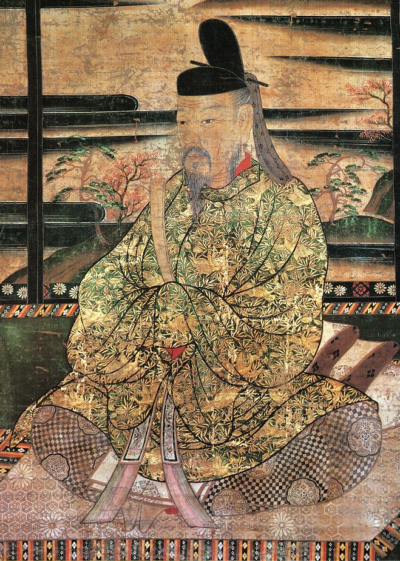
Emperor Saga
空海の教えを今に生かす
空海、もしくは弘法大師として知られるこの偉大な僧は、真言宗を開いたことで知られています。
彼の教えは、真言密教としても広く認知されており、その智慧は現代社会においても多くの人々に影響を与えています。
空海の生涯には、数多くのエピソードが存在し、その中には現代人が直面する問題に対するヒントが隠されていると言えるでしょう。
真言宗各派総大本山会、すなわち十八本山は、空海の教えを守り、伝える役割を果たしています。
これらの寺院は、宗教的な場所であると同時に、文化や教育の中心地としても機能しており、多くの人々にとって精神的な支えとなっています。
また、これらの寺院は、空海の教えを現代に生かすための研究や実践の場でもあります。
真言宗の教えは、一言で言い表すことは難しいほど奥深く、多岐にわたりますが、その中心には常に慈悲と智慧があります。
これらの教えを現代社会に適用することで、人々は心の平穏を得ることができるでしょう。
空海が残した真言密教の教義は、現代人が直面するストレスや苦悩に対しても、有効な指針を提供してくれます。
空海の教えを今に生かすためには、彼の思想を深く理解し、日々の生活の中で実践することが重要です。
そのためには、真言宗の寺院や教義に触れることはもちろん、空海が遺した文字や作品を通じて、彼の智慧に学ぶことができるでしょう。
空海の教えは、千年以上の時を経てもなお、私たちの心に響くメッセージを持っています。
Living Kukai’s Teachings Today
Kukai, also known as Kobo Daishi, is revered for establishing Shingon Buddhism, widely recognized as esoteric Buddhism.
His teachings, known as Shingon Mikkyo, continue to resonate widely in contemporary society, influencing many individuals with their profound wisdom.
Throughout Kukai’s life, numerous episodes hold hidden insights into issues confronting modern people.
The Head Temples of the Shingon Sect, collectively known as the Juhachiban, safeguard and propagate Kukai’s teachings.
These temples serve not only as religious centers but also as hubs of culture and education, providing spiritual support to many.
Moreover, these temples are hubs for research and practical application of Kukai’s teachings in modern contexts.
Shingon Buddhism’s teachings are incredibly profound and multifaceted, centered always on compassion and wisdom.
Applying these teachings in contemporary society can lead people to find peace of mind amidst the stresses and tribulations of life.
The doctrines of Shingon Mikkyo, as left by Kukai, offer valuable guidance for addressing the challenges faced by modern individuals.
To keep Kukai’s teachings alive today, it’s crucial to deeply understand his philosophy and practice it in daily life.
Engaging with Shingon temples and doctrines, and studying Kukai’s writings and works, allows us to learn from his wisdom.
Even after over a millennium, Kukai’s teachings continue to resonate as a profound message within our hearts.
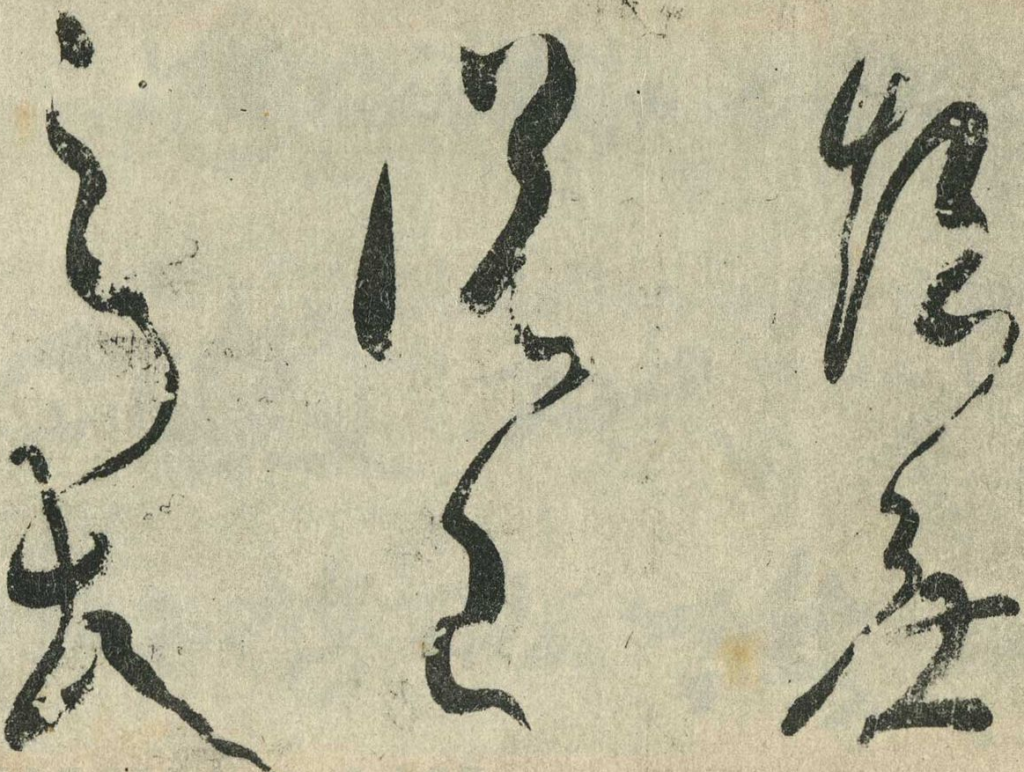
(「無道人之短 無説己之長」という句の太字部分)
“Words of Wisdom from Choi Sugi” (excerpt) by Kukai
(“Shortcomings of Others, Not One’s Own Virtues” highlighted in bold)
空海(弘法大師)のエピソードと教えの現代的意義
空海、別名弘法大師は、真言宗の開祖として知られる重要な仏教の僧です。
彼の生涯は多くの教えとエピソードに満ちており、それらは現代でも多くの人々に影響を与えています。
空海は真言密教の普及に尽力し、その実践を通じて人々に内面的な平和と精神的な成長を促しました。
彼の教えは、心を鎮めることの重要性や、日々の生活における慈悲と思いやりの実践を強調しています。
真言宗各派総大本山会、通称十八本山は、空海の教えを守り続ける重要な役割を果たしています。
これらの本山は、真言密教の教義を継承し、現代社会においてもその精神を広めるための中心的な場所となっています。
彼らは、修行、教育、社会奉仕といった形で、空海の教えを具体的な行動に移しています。
真言宗は、そのまとめとして、個人の内面的な成長を促進し、日々の生活をより意義深いものにするための実践的な教えを提供しています。
現代社会においても、空海の教えはストレスや不安を和らげ、心の平和を見つけるための有効な手段となり得ます。
真言宗の教義を現代へ適用することで、私たちはより調和のとれた生活を送ることができるでしょう。
真言宗各派総大本山会(十八本山)の役割と展望
空海、別名弘法大師は、真言宗の開祖として知られ、真言密教の教義を日本に確立した重要な僧侶です。
彼の影響力は、今日においても真言宗各派総大本山会において顕著に見られます。
この会は、十八本山とも呼ばれ、真言宗の教えを守り、伝えるという重要な役割を担っています。
空海が唱えた教えは、修行法や儀式だけでなく、人々の心を豊かにする哲学としても受け継がれています。
彼の教えは、慈悲と智慧を重んじ、日常生活における実践の重要性を説いています。
現代社会においても、これらの価値は非常に重要であり、多くの人々にとって指針となっています。
真言宗各派総大本山会は、空海の理念を基に、様々な活動を展開しています。
それには、信者や一般の人々への教育、文化財の保存、社会福祉活動などが含まれます。
また、真言宗の教義を広めるために、国内外での交流や対話を促進しています。
将来に向けて、真言宗各派総大本山会は、空海の教えを現代に適用し、より多くの人々にその智慧を共有することを目指しています。
そのためには、伝統を重んじつつも、時代の変化に合わせた新しいアプローチが求められています。
真言密教の普遍的な価値を生かし、現代社会の課題に対する解決策を提案することで、さらなる発展が期待されています。
The Modern Relevance of Kukai (Kobo Daishi)’s Episodes and Teachings
Kukai, also known as Kobo Daishi, is a prominent Buddhist monk revered as the founder of Shingon Buddhism.
His life is rich with teachings and episodes that continue to influence many people today.
Kukai dedicated himself to spreading esoteric Buddhism and through its practice, he encouraged inner peace and spiritual growth among people.
His teachings emphasize the importance of calming the mind and practicing compassion and empathy in daily life.
The Association of the Eighteen Main Temples of Shingon Buddhism, known as the Juhachiban, plays a crucial role in preserving and spreading Kukai’s teachings.
These temples serve as centers not only for religious practices but also for cultural and educational activities, providing spiritual support to many.
Moreover, these temples actively engage in research and practical applications to keep Kukai’s teachings relevant in modern society.
Shingon Buddhism offers profound teachings that are difficult to summarize briefly, yet they consistently revolve around compassion and wisdom.
By applying these teachings in contemporary contexts, people can find ways to alleviate stress and find inner peace.
Understanding Kukai’s philosophy deeply and practicing it in daily life are crucial to keeping his teachings alive and meaningful today.
The Role and Prospects of the Association of the Eighteen Main Temples of Shingon Buddhism
Kukai, also known as Kobo Daishi, is renowned as the founder of Shingon Buddhism and established the doctrine of esoteric Buddhism in Japan.
His influence remains prominent today within the Association of the Eighteen Main Temples of Shingon Buddhism.
This association, known as the Juhachiban, plays a critical role in preserving and transmitting the teachings of Shingon Buddhism.
Kukai’s teachings encompass not only practices and rituals but also a philosophical approach that enriches people’s minds.
His teachings uphold values of compassion, wisdom, and the practical application of these principles in everyday life.
These values remain highly relevant in modern society, guiding many as moral compasses.
The Association of the Eighteen Main Temples of Shingon Buddhism operates based on Kukai’s principles, undertaking various activities.
These include educating believers and the public, preserving cultural heritage, and engaging in social welfare activities.
Furthermore, the association promotes international exchanges and dialogues to expand the reach of Shingon Buddhism’s teachings.
Looking ahead, the association aims to apply Kukai’s teachings to contemporary issues and share his wisdom with more people.
This pursuit calls for honoring tradition while embracing new approaches that address the evolving challenges of our times.
By leveraging the universal values of esoteric Buddhism, the association aims for further development by proposing solutions to contemporary societal issues.

(蠟牋)』(国宝、醍醐寺蔵)
Emperor Go-Daigo’s Imperial Seal Letter “Tencho Inscription” by Bunkanbo Koshin (National Treasure, stored at Daigoji Temple)
真言宗のまとめと現代への適用
空海、後に弘法大師と尊称されるようになったこの偉大な僧侶は、真言宗の開祖として知られています。
彼の教えは真言密教として広く伝わり、今日の日本仏教においても重要な位置を占めています。
空海の教えには、現代社会においても適用できる多くの智慧が含まれており、その生き方や思想は多くの人々に影響を与え続けています。
特に、空海が唱えた様々な真言、すなわち秘密の言葉やマントラは、心を集中させるための手段として用いられ、精神的な成長や自己啓発の道具として現代にも活かされています。
また、彼の書いたテキストや詩は、仏教の教えを深く理解するための貴重な資料となっています。
真言宗各派総大本山会、いわゆる十八本山は、真言宗の教えを守り、伝えるために重要な役割を果たしています。
これらの本山は、空海の教えを基にした修行や儀式を実践し、信者たちに真言密教の精神性を伝えています。
また、これらの寺院は、文化的な遺産としても価値があり、多くの人々が訪れる観光地となっています。
空海の教えを現代に活かすためには、彼の思想や実践を日常生活に取り入れることが重要です。
例えば、マインドフルネスや瞑想の実践は、空海が提唱した集中と瞑想の技法に根ざしています。
これらの実践を通じて、現代人はストレスを軽減し、心の平穏を得ることができるでしょう。
真言宗の教えは、単に過去の遺産ではなく、現代社会における精神的な指針となり得ます。
空海や真言宗の歴史を学ぶことは、私たちがより豊かな精神生活を送るための一助となるのです。
Summary of Shingon Buddhism and Its Application in Modern Times
Kukai, later revered as Kobo Daishi, is renowned as the founder of Shingon Buddhism. His teachings have been widely propagated as Esoteric Buddhism, holding a significant position in contemporary Japanese Buddhism.
The wisdom in Kukai’s teachings holds relevance for modern society, influencing many with his way of life and philosophy. Particularly, the various mantras and secret words he advocated serve as means to focus the mind, fostering spiritual growth and self-development in today’s world.
Moreover, his writings and poetry are invaluable resources for deepening understanding of Buddhist teachings.
The association of the Eighteen Main Temples of Shingon Buddhism plays a crucial role in upholding and transmitting Kukai’s teachings. These temples practice rituals and training rooted in Kukai’s teachings, imparting the spiritual essence of Esoteric Buddhism to believers.
Furthermore, these temples are not only centers of religious practice but also hold cultural significance, attracting numerous visitors as tourist destinations.
To apply Kukai’s teachings in contemporary life, it is important to integrate his thoughts and practices into daily routines. For instance, mindfulness and meditation practices are rooted in Kukai’s techniques of concentration and meditation, offering pathways for stress reduction and inner peace for modern individuals.
The teachings of Shingon Buddhism provide spiritual guidance in today’s society, not merely as relics of the past but as relevant principles for enriching our spiritual lives.
Studying the history of Kukai and Shingon Buddhism serves as a means for us to lead more spiritually fulfilling lives.
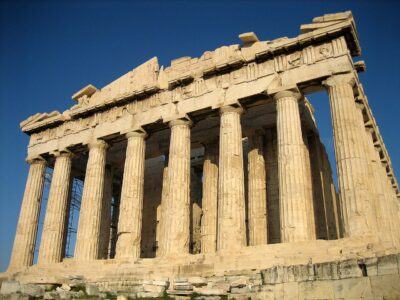
Warning: Undefined variable $comment_form_sns_tags in /home/ktsky/philosophy-kayak.com/public_html/wp-content/themes/shaper/comments.php on line 27